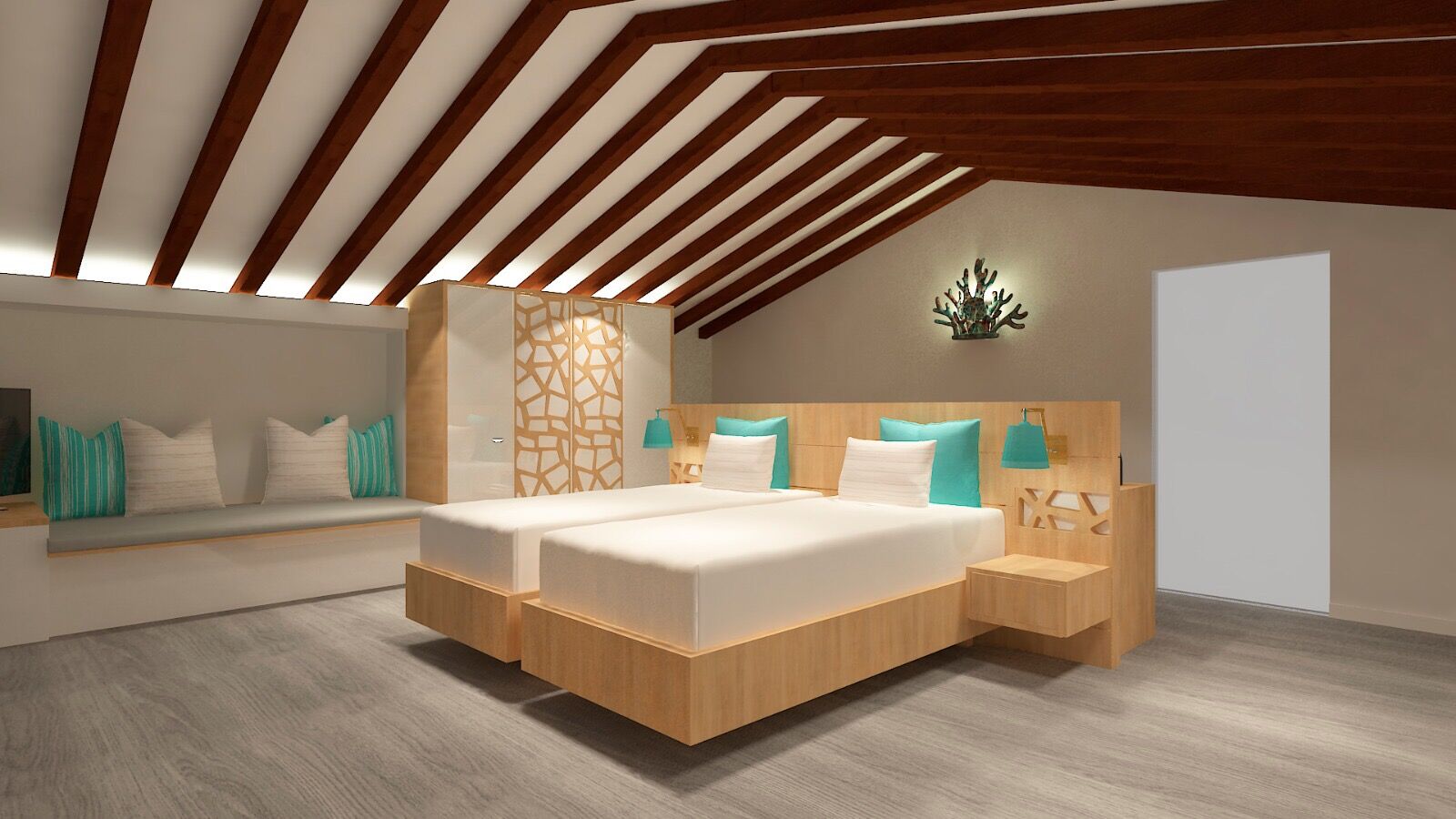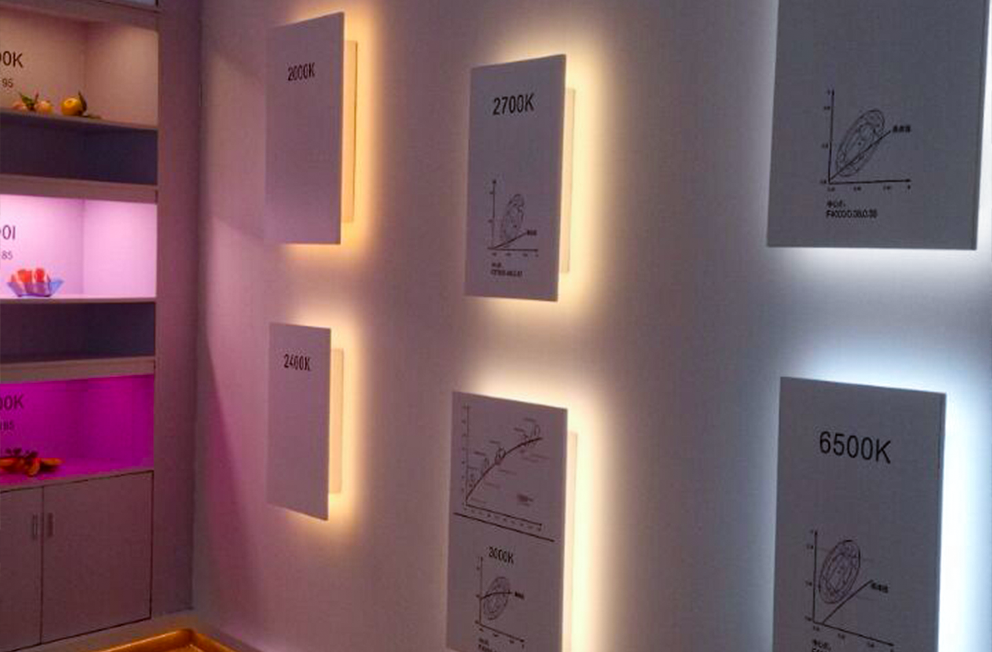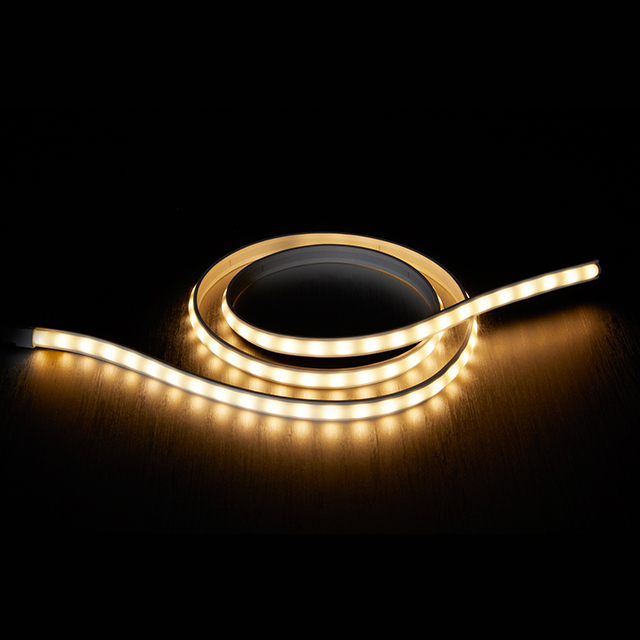Views: 0 Author: Site Editor Publish Time: 2025-03-17 Origin: Site
LED strip lights are a popular choice for modern bedroom decor, but do they affect sleep quality?
Many people wonder if it's good to sleep with LED strip lights on. Lighting can impact your sleep cycle and overall health.
In this post, we’ll explore whether LED strip lights are beneficial or harmful to your sleep and how they influence your rest.

LED strip lights are flexible boards filled with light-emitting diodes (LEDs). They’re popular in home decor for creating ambient lighting or highlighting certain areas, like shelves or under furniture. Their versatility allows them to be used for accent lighting, task lighting, and even in bedrooms to create a cozy atmosphere.
Light plays a key role in regulating our sleep-wake cycle, known as the circadian rhythm. This natural cycle depends on the contrast between light and darkness. When exposed to light, the body adjusts its internal clock, signaling wakefulness.
Melatonin, a hormone that helps regulate sleep, is produced in the dark. However, light exposure, especially from blue light, can suppress melatonin production. LED strip lights often emit blue light, which can make falling asleep more difficult. This could lead to restless nights, as the brain is tricked into thinking it’s still daytime.
The color temperature of the light is crucial. Warm-toned LED lights are less likely to disrupt sleep compared to cooler, blue-toned lights. So, if you want to avoid affecting your sleep, it's better to opt for warmer light or dim the brightness to minimize the impact on melatonin levels.

Creating a Calming Atmosphere
The soft glow of LED strip lights can help create a peaceful and relaxing environment. Their subtle light is perfect for winding down, making it easier to transition from the busyness of the day to a restful night.
Safety and Comfort
For those who feel uneasy in complete darkness, LED strip lights serve as a gentle nightlight. This low-intensity lighting helps navigate the room without fully waking up, offering comfort and reducing the fear of the dark.
Energy Efficiency
LED strip lights are known for being energy-efficient. They consume less power than traditional bulbs, making them an environmentally friendly and cost-effective option. Plus, they have a longer lifespan, which means fewer replacements and lower costs in the long run.
Disruption of Sleep Quality
Exposure to light, particularly blue light from LED strips, can suppress melatonin production. This hormone is essential for regulating sleep, and its reduction can make falling asleep more difficult, leading to poor-quality sleep.
Sleep Fragmentation
Even dim lighting can affect sleep. It may lead to lighter sleep, causing you to wake up more frequently throughout the night. This disrupts your natural sleep cycle and can leave you feeling tired in the morning.
Negative Health Impacts
Chronic exposure to light at night, including LED strip lights, may lead to long-term sleep problems. Inadequate sleep can affect both mental and physical health, potentially leading to issues like reduced concentration, memory problems, and weakened immune function.
LED strip lights come in different color temperatures, which are measured in Kelvins (K).
Warm LED Light (2700K-3000K): These lights produce a soft, yellowish glow. They mimic sunset lighting and have minimal impact on melatonin levels, making them ideal for sleep.
Cool LED Light (above 4000K): These lights emit a bluish tint, which can be disruptive to sleep. The blue light suppresses melatonin, making it harder to fall asleep.
Benefits of Dimmable Lights: Dimmable LED lights let you adjust the brightness, allowing you to choose the right level of light for relaxation. Lowering the brightness reduces the light’s impact on your sleep cycle, especially before bedtime.
Practical Advice: Set your dimmable LED lights to the lowest comfortable level before sleep. This creates a cozy environment without interfering too much with your circadian rhythm, helping you wind down and sleep better.
Many modern LED strip lights come with built-in timer functions. These timers allow you to set the lights to turn off after a certain period, ensuring they don’t stay on all night.
By using timers, you can reduce prolonged exposure to light, which helps your body prepare for sleep without the interference of constant light.
This is particularly helpful for those who tend to fall asleep while the lights are still on, as it ensures the lights turn off once you're deep in sleep.
To minimize the impact of LED strip lights on your sleep, it’s important to position them wisely.
Under the Bed: Placing lights beneath your bed creates a soft glow around the room, avoiding direct light exposure to your eyes.
Behind Furniture: Mounting LED strips behind furniture or shelves can give you an ambient effect without shining directly into your eyes.
Under Shelves or Cabinets: This placement provides indirect lighting, making the room feel cozy without disrupting your sleep cycle.
These setups reduce the intensity of light and create a calming environment for better sleep.
There’s a common myth that LED lights cause eye strain or long-term health issues, but it’s not entirely true.
Prolonged exposure to bright lights, including LEDs, can cause temporary discomfort like eye strain or headaches. However, this is usually due to improper brightness or poor positioning, not the LED technology itself.
When used properly, LED lights are generally safe. They don’t emit harmful radiation or pose significant risks to your eyes or overall health.
Another misconception is that leaving LED strip lights on all night is unsafe. In fact, LED lights are much safer than traditional incandescent bulbs.
LEDs are energy-efficient and produce very little heat. This makes them a safer option for extended use, as they are less likely to overheat.
Energy-efficient LED lights also consume less power, which can help reduce electricity costs even if left on for long periods. As long as they’re of good quality, leaving them on overnight is safe.
If you're looking for a calming light before sleep, non-LED options can be a great alternative.
Traditional Nightlights: These provide a gentle glow without being too harsh. They’re perfect for creating a relaxed atmosphere without disrupting your sleep cycle.
Himalayan Salt Lamps: These lamps emit a soft, warm light that creates a peaceful environment, ideal for winding down before bed.
Warm-Toned Incandescent Bulbs: If you prefer a more traditional light source, incandescent bulbs with a warm tone (around 2700K) provide a soothing glow that won’t interfere with melatonin production.
These alternatives offer a calm, sleep-friendly atmosphere without the potential downsides of blue-toned LED lights.
Darkness plays a critical role in promoting good sleep. Exposure to light, even dim light, can interfere with your body’s natural sleep rhythm.
Creating a Dark Sleep Environment: Use blackout curtains or sleep masks to eliminate external light. These simple tools help you maintain a pitch-black environment that supports deep, restorative sleep.
Sleep Hygiene and Environmental Factors: Factors like noise levels, room temperature, and the amount of light can all affect your sleep. A cool, dark, and quiet room helps promote better rest.
These small adjustments can significantly improve the quality of your sleep, making it easier to fall and stay asleep throughout the night.

Sleeping with LED strip lights on has both pros and cons. While they create a calming atmosphere, they can disrupt sleep if not used properly. To minimize negative effects, opt for warm, dimmable lights and consider using timers. For better sleep, try non-LED alternatives and ensure your bedroom is dark.
Experiment with different setups to see what works best for your sleep.
A: LED strip lights are energy-efficient, consuming less power than traditional incandescent bulbs. They are designed to last longer, which helps save on electricity costs over time.
A: Prolonged exposure to bright or poorly positioned LED lights may cause temporary discomfort like eye strain or headaches. However, LEDs are generally safe when used properly.
A: Yes, blue light emitted by LED strip lights can suppress melatonin production, disrupting your circadian rhythm and making it harder to fall asleep.
A: Warm LED lights (2700K-3000K) are ideal for sleep as they have less impact on melatonin levels. Cool, blue-toned lights can interfere with sleep quality.
INTEGRATE™ is a series of integrate flexible LED strips including single White, single Color, variable white, RGB, RGB pixel, RGBW and RGBVW. Various types would meet any your customized requirements. Integrate has dome surface as COB for soft and dot-less effect, same SMD technology as lighting sou
Light and color have long been understood to influence human emotions, behavior, and even physical well-being. From the moment we wake up to the time we go to sleep, the type of light surrounding us plays a vital role in shaping our moods, productivity, and overall state of mind. This is why understanding the psychology of light and color is crucial when selecting LED lighting for various environments, whether it's at home, in the office, or in commercial settings.
LED strip lights are a popular choice for modern lighting due to their energy efficiency, versatility, and sleek design. However, one crucial aspect that is often overlooked when using LED strips is thermal management. LED lights, like any other electronic component, generate heat as they operate, and if not properly managed, this heat can reduce their performance and lifespan.
Choosing the right LED strip lights for your home or office is a decision that requires careful consideration. LED strips have become an increasingly popular choice due to their versatility, energy efficiency, and aesthetic appeal. However, with so many options available on the market, it’s easy to feel overwhelmed by the number of different types and features.
Indirect lighting has become a popular choice for creating a soothing and stylish ambiance in both residential and commercial spaces. Unlike direct lighting, which often creates harsh shadows and bright spots, indirect lighting provides a more gentle and even illumination that enhances the atmosphere without overwhelming the eyes.
Proper lighting on boats or yachts is not just about enhancing the aesthetic appeal; it plays a crucial role in ensuring safety, functionality, and comfort on the water. Effective lighting can help improve visibility during nighttime navigation, set the mood for evening activities, and highlight specific areas of your vessel. One of the best lighting options for marine environments is LED strip lights. Their versatility, energy efficiency, and durability make them an excellent choice for a variety of marine applications.
To ensure that your LED strip lights continue to perform at their best and last as long as possible, proper care and installation are essential. LED strips are known for their longevity and energy efficiency, but several factors can influence how long they last. By following some simple yet effective maintenance tips, you can extend the lifespan of your LED strips and keep them running smoothly for years to come.
When purchasing LED strip lights for your home or business, you might notice various certifications listed on the product packaging or technical specifications. These certifications, often represented by logos or marks, indicate that the product has met specific safety, environmental, and quality standards. Understanding what these certifications mean can help you make informed decisions, ensuring you choose a reliable and safe lighting solution.
LED strip lights are a fantastic way to add vibrant lighting to your home or workspace, offering versatility and energy efficiency. However, when it comes to installation, there are common mistakes that many people make, which can negatively affect the performance, lifespan, and overall functionality of the LED strips. Whether you're a seasoned DIYer or a first-time installer, it's crucial to avoid these common errors to ensure your LED lights shine brightly and last for years to come.
Flexible lighting strips, commonly known as LED strips or tape lights, have revolutionized the way we illuminate spaces. Their adaptability, energy efficiency, and vibrant lighting options make them popular choices for a wide variety of applications—from home decor to commercial advertising and industrial uses.
In recent years, flexible lighting strips have become increasingly popular not just for indoor use, but also as a creative and practical solution for outdoor lighting applications.
Flexible LED strip lights have rapidly gained popularity in both residential and commercial lighting applications. Their versatility, energy efficiency, and ease of installation make them an excellent choice for accent lighting, decorative purposes, and practical illumination alike.
Flexible lighting strips, commonly known as LED strip lights, are thin, versatile lighting fixtures that consist of small light-emitting diodes (LEDs) mounted on a flexible circuit board.
In the world of modern lighting, flexible lighting strips—also known as LED strip lights or ribbon lights—have revolutionized how we illuminate spaces. These thin, adaptable lighting solutions offer not only energy efficiency but also unmatched versatility, making them a top choice for a wide range of residential, commercial, and industrial applications.
Are you looking to enhance your space with vibrant lighting? LED Neon Flex is an energy-efficient, versatile, and durable solution that mimics traditional neon lights.
In the ever-evolving world of lighting, RGB Neon Flex Strip Light has emerged as a game-changer, offering a flexible, energy-efficient, and highly customizable alternative to traditional neon lighting.
Looking for a way to brighten up your space with vibrant lighting? Neon flex strip lights are a fantastic solution.
Have you ever wondered if you can cut neon flex strip light? This versatile lighting solution has become increasingly popular for custom projects.
COB LED strips are becoming an increasingly popular lighting solution, offering exceptional quality and performance.
Ever seen your wall paint or clothes look weird under certain lights? That's probably a low CRI at work. CRI affects how true colors look. It can make your home feel bright or dull. In this post, you'll learn what CRI means, why it matters, and which CRI is best for LED strips.


